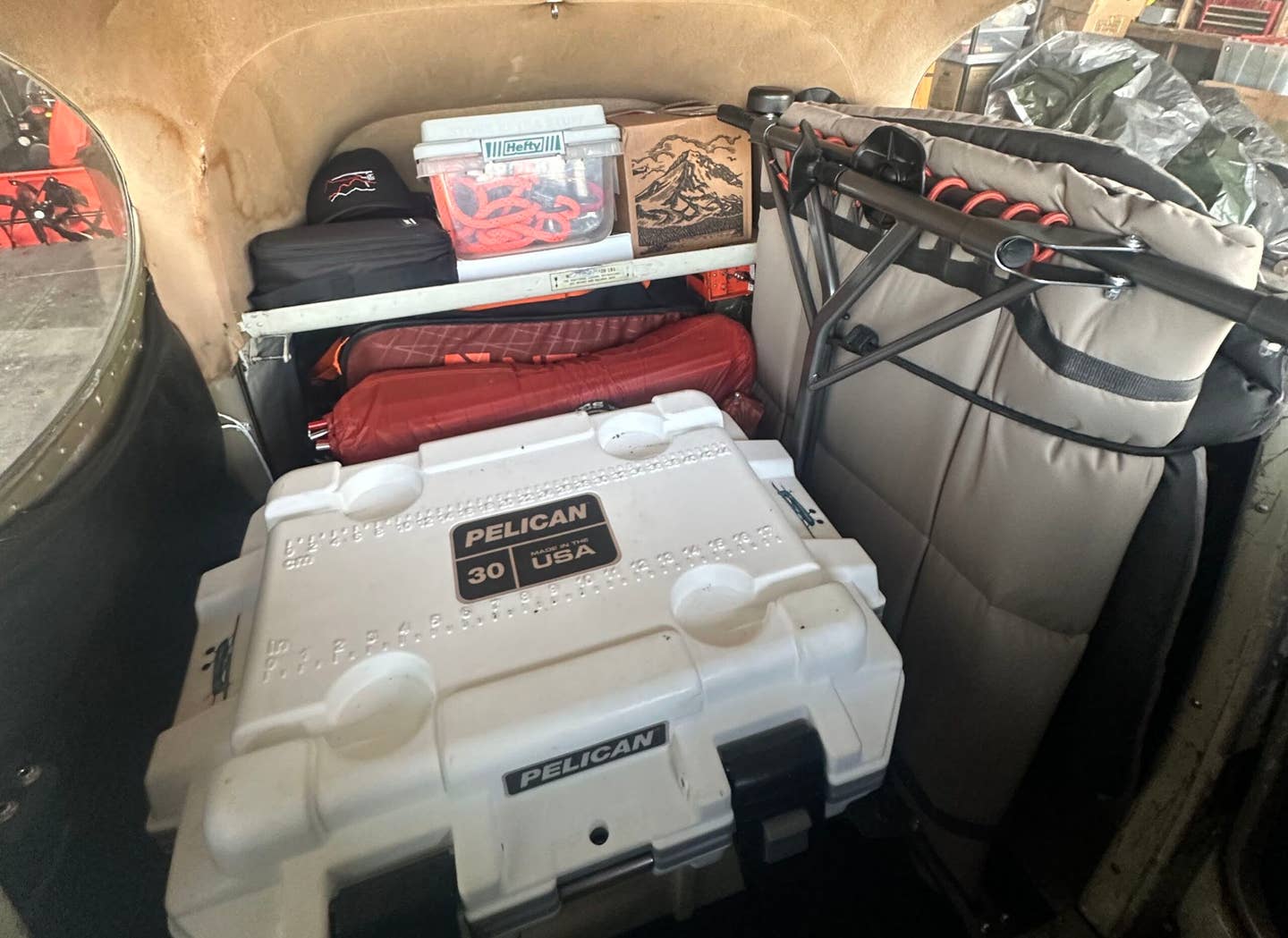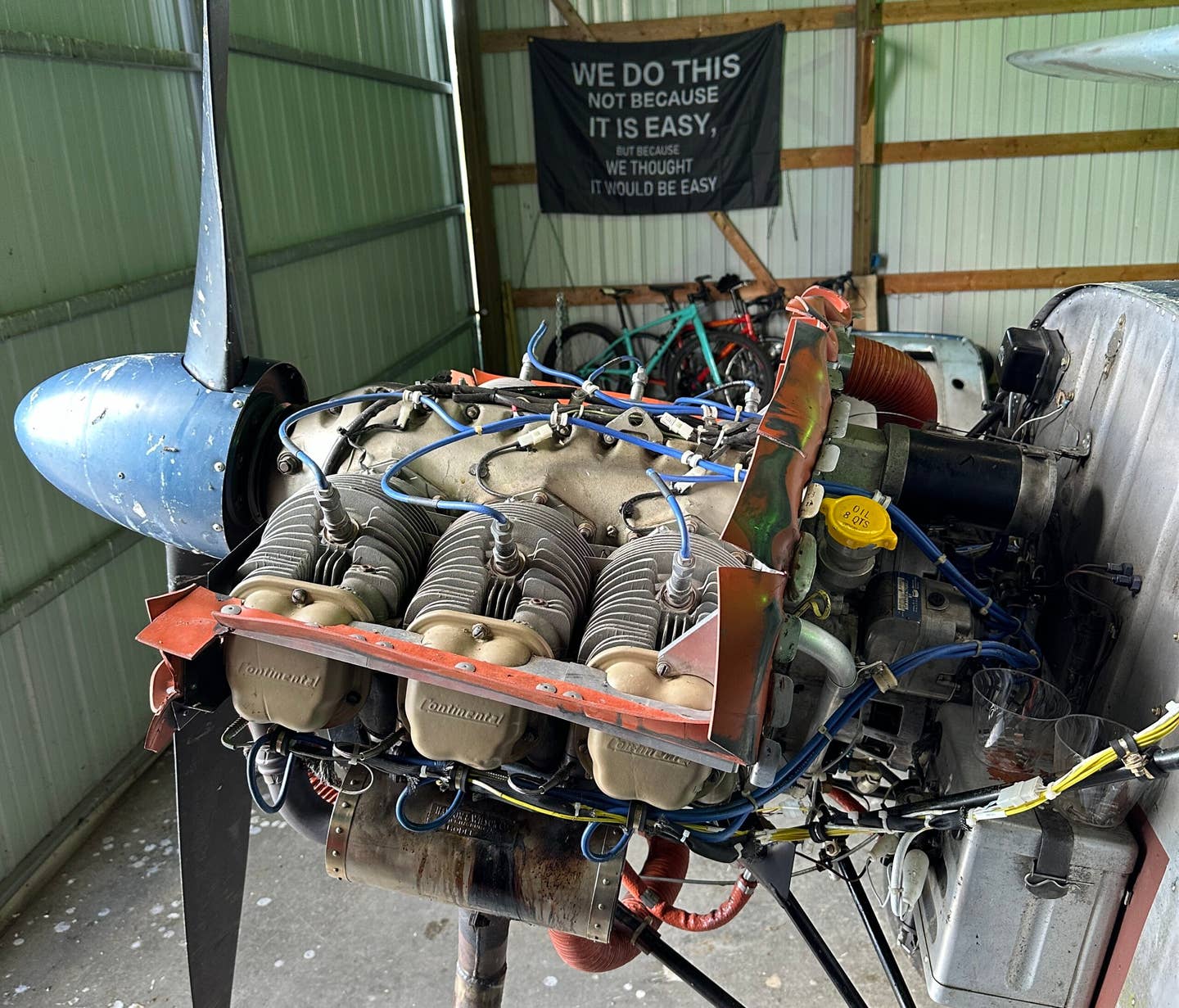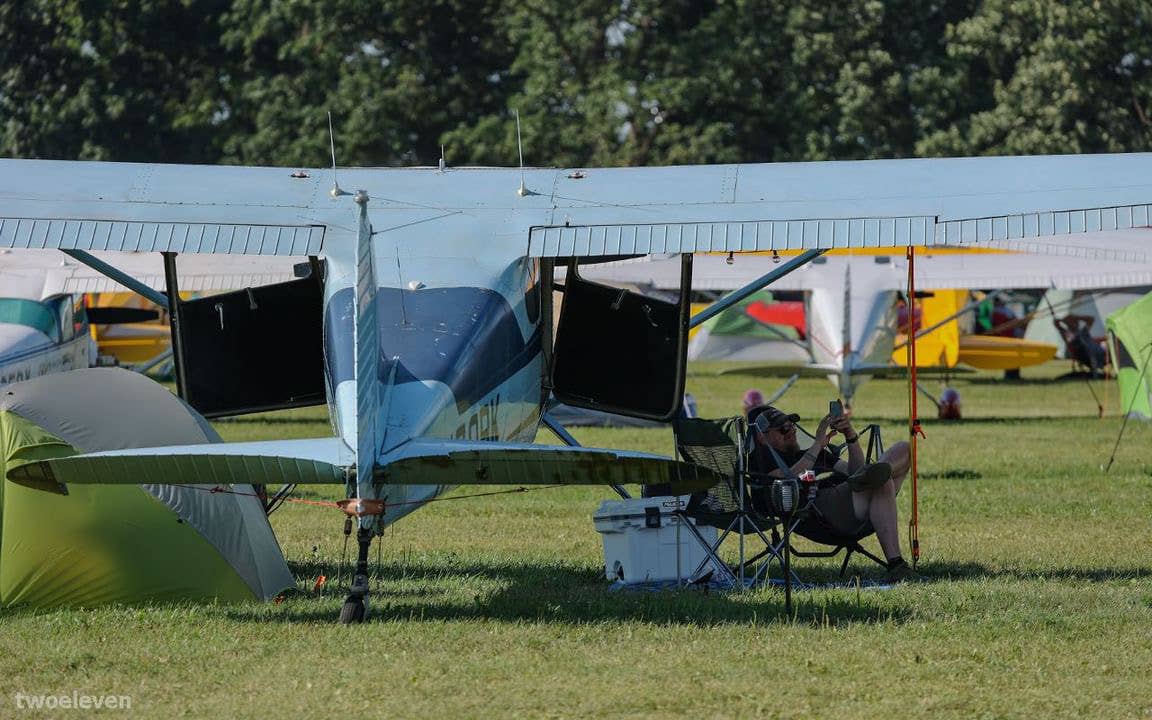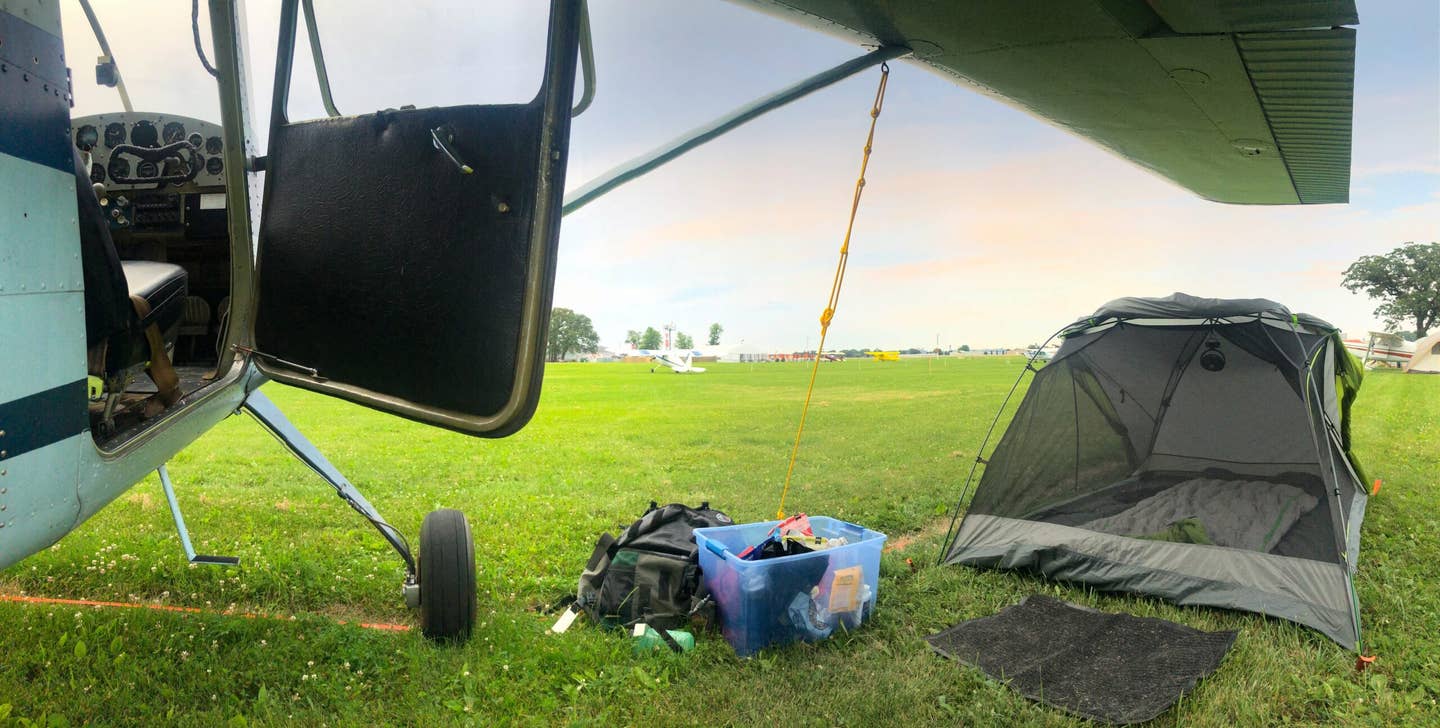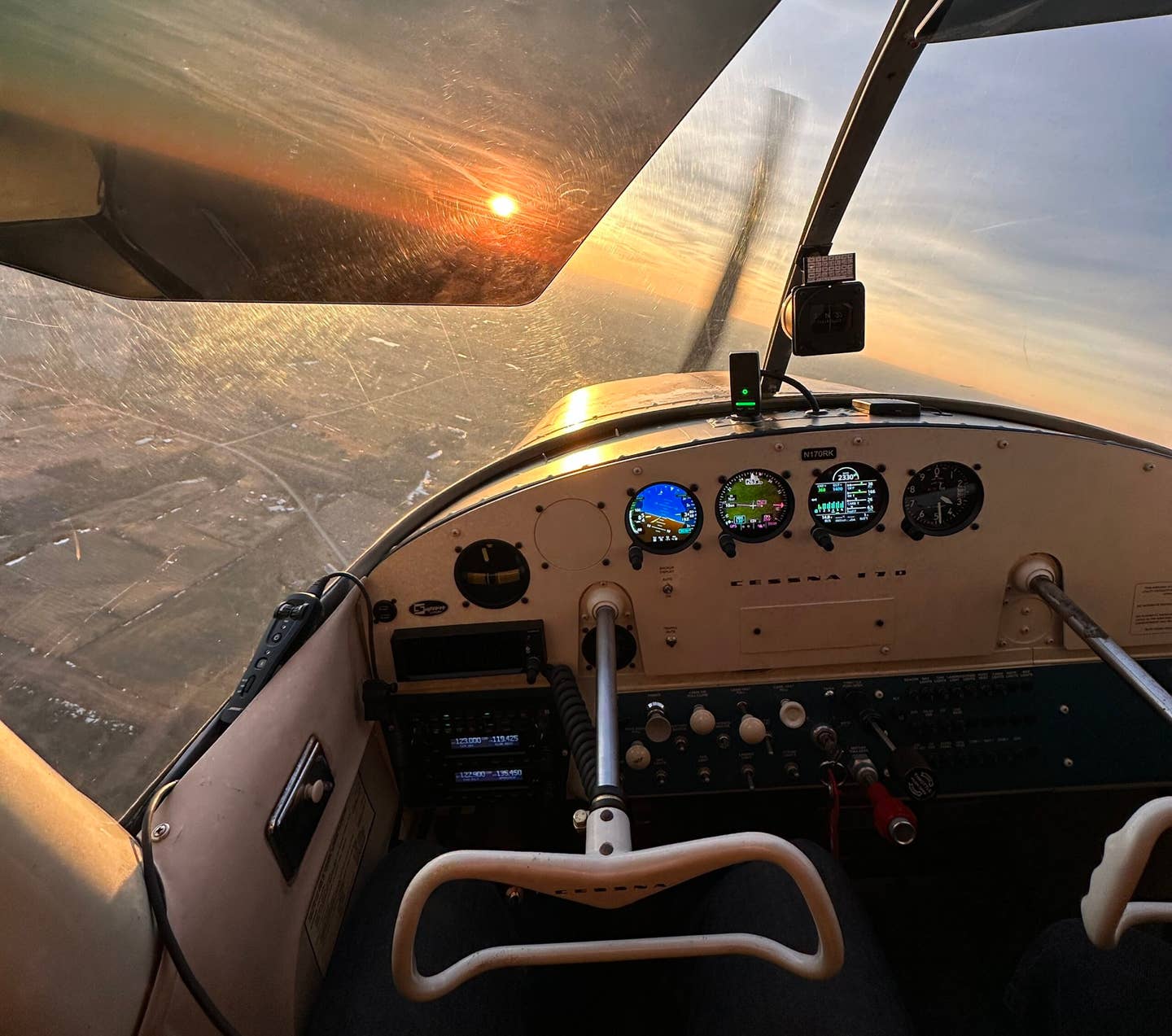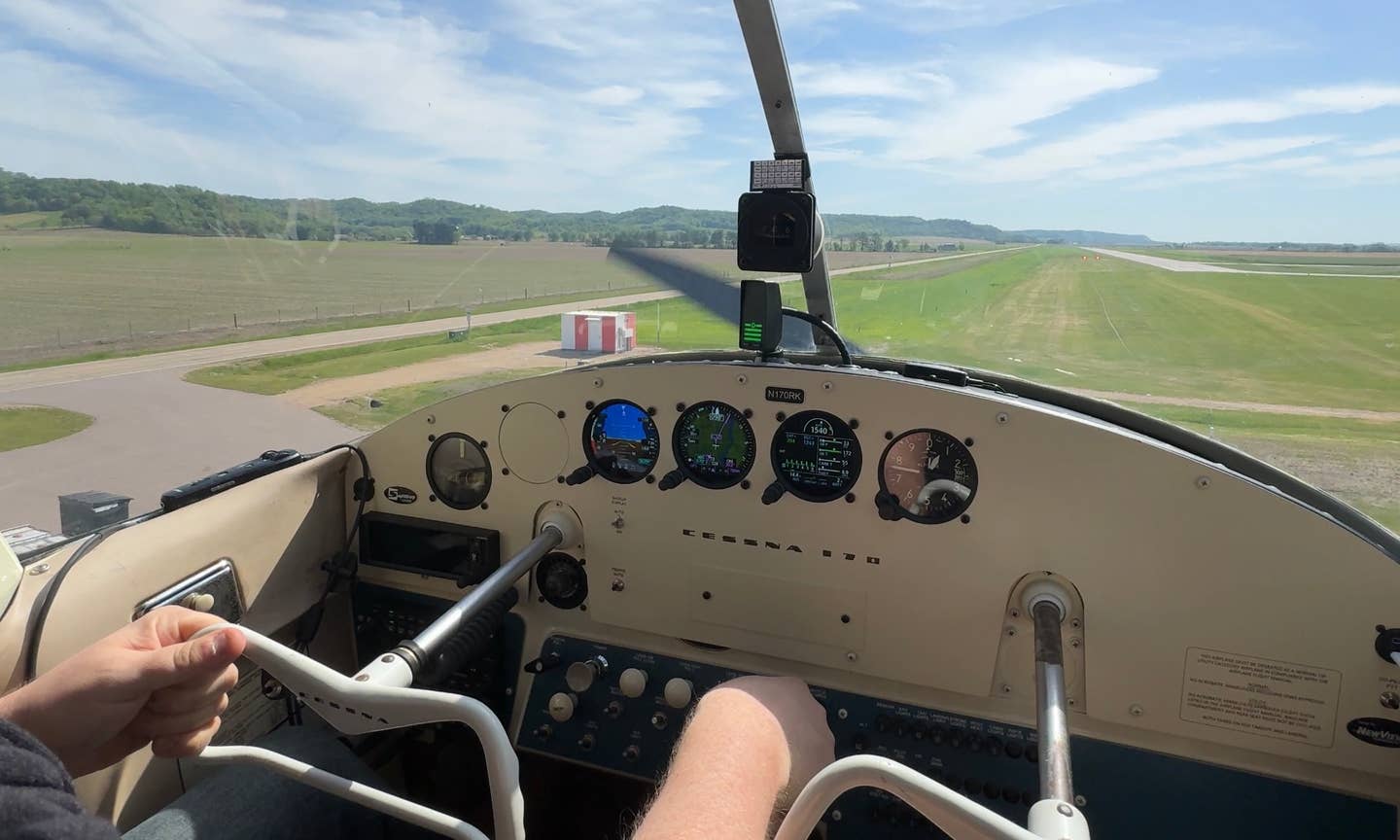Vintage Aircraft Ownership Is Best Viewed as 2 Hobbies in 1
To maintain a vintage airplane in safe, reliable condition on a real-world budget, one must view the knowledge of its inner workings and maintenance as an entirely separate hobby in and of itself.

With fabric covering and a few difficult-to-source parts, even simple, modest types like this Taylorcraft demand a certain level of hands-on knowledge and expertise to own. [Jason McDowell]
I want to buy a classic car. Something cool and unique from the ’70s, like a diesel Mercedes sedan. I love the idea of sliding behind the wheel of something like that and heading out for coffee on a sunny Sunday morning.
Like many others who grew up in southeastern lower Michigan, where allegiance to either Ford or Chevy was far more critical than any political leanings, I regularly entertain fleeting fantasies of vintage car ownership. Cars from that era are to modern vehicles what vinyl is to digital downloads. They require more attention, but the experience is a pure one that connects with the soul in a way the latest tech-laden, stability-controlled wündercars never will.
But whenever I dive into researching the ownership of such sweet machines, I’m quickly reeled back to reality by a certain factor that is common among classic cars and airplanes. Lurking beneath the bodywork are myriad concerns one must become familiar with to keep the machine in good running order.
There are many cars and airplanes that require relatively little attention outside of adding fuel and taking them out for a rip. A factory-new Cessna or Cirrus, for example, and nearly any modern car. But the older and more interesting ones demand more, and many prospective owners underestimate or overlook just how much more.
To maintain a vintage airplane—even a modest one—in safe, reliable condition on a real-world budget, one must view the knowledge of its inner workings and maintenance as an entirely separate hobby in and of itself. Like any new hobby, this requires time and attention above and beyond flying and cleaning the airplane. From networking with other owners to proactively sourcing difficult-to-find parts to learning about the latest tips and tricks in type-specific forums, one must become an enthusiastic expert on the history, design, and maintenance of the airplane.
My friend Chris is a good example. A few years ago, he purchased a classic Bellanca Super Viking. It’s a sweet machine, with 300 horsepower and a cruise speed that’s twice that of my 170. With a wood and fabric airframe, complex systems, and limited parts availability, it can be described as an airplane for “advanced” owners. Owning one of these is playing airplane owner on hard mode.
Fortunately, Chris possesses the motivation and interest necessary to embrace the challenge. When he was a kid, his father owned one, and his childhood produced many nostalgic memories of flying with dad. Accordingly, diving headfirst into the world of Viking ownership is a meaningful endeavor for Chris, and he has happily earned what I estimate is the equivalent of an associate’s degree in Super Viking ownership since purchasing it.
Similarly, my friend Kristin recently purchased a Cessna 170B and has assigned herself the task of learning all the minutiae of the type, from sourcing parts to addressing known weak points of the airplane to updating certain systems with modern components. For months, she peppered me with random questions via text. How do 170 owners deal with the limited clearance for radios behind the panel? Is it really advisable to remove the parking brake entirely? What about that landing gear reinforcement kit I’ve been hearing about? Is it worth it?
Both Chris and Kristin have made it their mission to become the most informed aircraft owners possible. Their interest and motivation are so strong, few things will ever catch them off guard. They know what parts and components are next up for overhaul or replacement. They’ve learned which mechanics in their area are the most qualified to work on their airplanes. And, accordingly, neither they nor their bank accounts are likely to be caught by surprise anytime soon.
It can be argued that if a prospective vintage aircraft owner doesn’t have the time or motivation to spend an hour or two studying and learning their aircraft type for every hour they spend flying, they’re taking a concerningly passive approach to ownership. People do this all the time, but these are the same people who overlook key maintenance items and don’t know where to turn when an obscure part requires replacement. Their passiveness erodes safety to a certain degree, and it results in an increase in both expense and downtime.
- READ MORE: Love the One You’re With
As I investigated those old diesel Mercedes sedans more closely, I learned a lot. I learned how the floor pans happily deteriorate and rust out if a shaker of salt so much as glances in their direction. I learned that their insanely complex vacuum systems were apparently designed around witchcraft and dark magic. And I learned that if one lacks the time and knowledge to perform their own maintenance, one would be well-advised to marry into a family of qualified mechanics.
Before long, I realized that I most certainly do not possess the time or drive to earn the equivalent of an associate’s degree in Vintage Mercedes Studies. I knew my limits, and I knew I just wanted to be able to hop in and cruise around, fat, dumb, and happy. And my limited research revealed that, like a vintage aircraft, this machine is not at all suited to an owner like me.
So whether it’s a vintage aircraft or automobile, take a step back before diving in. Evaluate the amount of free time at your disposal. And consider the research and ownership of such a machine to be a hobby in and of itself, separate from operating it, and worthy of its own time and mental energy.

Subscribe to Our Newsletter
Get the latest FLYING stories delivered directly to your inbox

